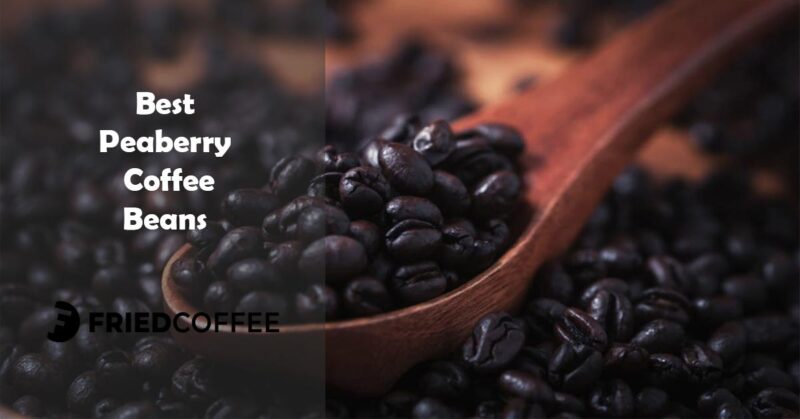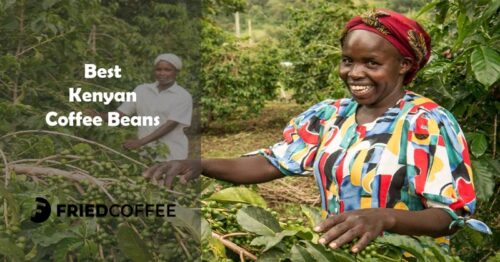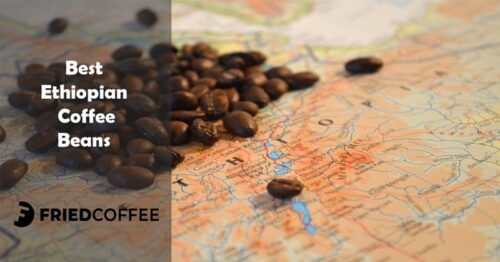A mesmerizing coffee can sponsor a good mood. For many of us, the best alarm clock is the distinctive aroma of delicious coffee. Isn’t it? Well, you can consider producing coffee more of an art, rather than just the cultivation of berries.

Coffee By Type
Below you can find coffee beans from our collection well categorized into various types to suit the so many taste palates. We have tried to bunch the best beans from all over the world in our top picks.
Coffee By Use
Search for your favorite coffee by how you are going to brew. Be it a French Press or pulling an espresso shot, we have got you covered.
Coffee By Roast
The coffee you receive goes from the roasting process at last. We have classified the beans into various common roast levels here.
Coffee by Region
Expect the beans from the most popular coffee-producing regions in the world. These buying guides also include some vital information about the origin, like history, characteristics and more about the region.
Coffee Reviews
The coffee world is huge and so are the brands and that doesn’t end here, each brand has many products. So, to give you a hand on this, we have done some reviews about specific coffee companies.
How Coffee Grows
Most of us have not seen coffee in its original form, before the roasting process. We’re so used to going to the store and picking up either instant coffee crystals, ground coffee beans, or coffee beans that have already been roasted. Few are even like that they just are aware of the various types of coffee drinks, but not the beans.
Your favorite beverage actually comes from a tree; although some argue that it is a bush. The scientific name for the tree is, Coffea. The coffee tree grows fruits that are sometimes referred to as cherries due to their aesthetic appearance. The round fruit grows in bunches and generally takes approximately 7 to 9 months to mature.
Inside of the cherry is two flat seeds, which are coffee beans. So figuratively speaking, coffee beans are actually the seeds or pit of the fruit.
Climate For Growing Coffee Beans
The ideal climate for successful coffee growing is tropical environments that have nutrient-rich soil, along with minimal pests and diseases. Excessive heat can cause the fruits to ripen too fast. It can also attract unwanted pests.
Continents Within the Coffee Belt
The average temperature in which coffee growing has been stated to be the most successful, are temperatures ranging between 64° F and 70° F. Any temperature above 73° F, runs the risk of ruining the coffee crops.
The prime geographic locations that guarantee optimum quality and best results for coffee growing are collectively referred to as, The Coffee Belt. The Coffee Belt is a set of locations, spread across 5 continents, that form a band from East to West, stretching across the middle of the Earth’s equator. The locations are also known for their tropical weather. The countries within these continents actually provide the majority, at least 70% of the coffee that we drink on a daily basis. Here’s an example of where the original Coffee Belt plantations were located, which was comprised in the 19th century. Each continent, and the countries within them include:
- South America: Bolivia, Brazil, Peru, Ecuador, and Columbia.
- Central America: Costa Rica, Guatemala, Mexico, Nicaragua, Honduras, El Salvador, and Panama.
- Africa and Arabia: Burundi, Con, Ethiopia, Kenta, Rwanda, Tanzania, Uganda, Yemen, Zambia, Zimbabwe.
- Asia: India, Indonesia, Papua New Guinea, Myanmar, and Vietnam.
- Islands and Others: Australia, Dominican Republic, Hawaii, Jamaica, Puerto Rico.
Today, there have been many more countries added to the original Coffee Belt. Each area has its own specialty whether it’s a certain type of bean or flavor. It should also be noted that coffee is highly regulated under strict quality and improvement requirements to ensure that coffee is available to those around the world and available at a fair price and of optimal quality.
Harvesting Coffee
The process from planting a coffee tree until it is ready to be harvested is approximately 3 to 4 years. For this reason, coffee crops are planted on a rotational basis. This ensures that there will be a continuous flow of coffee beans being harvested to keep up with supply and demand.
There are two types of harvesting methods. The first method is called selective harvesting. Selective harvesting is when you only pick the ripe cherries off of the tree. You can tell that they’re ripe by squeezing them, if they’re slightly soft and are bright red in appearance, then they are ready. You’d leave the remaining cherries attached to finish their ripening process.
Harvest by stripping is for more large-scale, commercial crops. Stripping actually creates a great deal of waste as it does not pick and choose which cherries to harvest. Machines are used to remove all of the cherries, even those that are far from ready.
The benefits outweigh the profits lost due to waste. For example, for coffee growers who have several acres, the cost to hire laborers to go through the entire crop and handpick the ripe cherries would be a tremendous investment that may not provide a return. So, having to discard the cherries that are not yet ripe, is still more financially beneficial than the alternative option of hiring people to pick by hand.
Processing The Cherries
Now that you’ve harvested the cherries, it’s time to remove the coffee beans and prepare them for roasting. You should do this right away because they will spoil if you pick them and set them aside with the intention of getting to them later. There are 2 main methods that you can use outside of factory processing in order to complete the task.
Pulp the Berries
To pulp the berries, you will need to slightly squeeze them until the beans pop out. Try to avoid using a tool such as a knife, as you don’t want to take the chance of piercing the bean. The beans may have somewhat of a slippery or slime-like consistency to them, which is totally normal.
Discard Fruit and Begin Fermenting Process
Discard the fruit and place the beans in a basin of water for a few days. This fermenting process will help to separate the slime from the bean. After a day or two, take a clean hand and gather any debris and skin that may be floating around on top and discard. Then use your hands to mix the beans around in the water. If the beans feel a bit rough, then they are ready. This step will also help to separate the tan parchment-like layer from the bean. Drain the water and rinse once more with clean water. The beans are then roasted in batches to their suitable levels and are packed for the market.




















